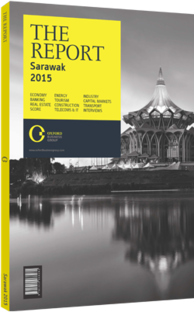OBG talks to Aaron Toh Chee Ching, Group Managing Director and CEO, Sarawak Cable Toh, Sarawak Cable Berhad

Interview: Aaron Toh Chee Ching
What kind of precedent does Sarawak Energy’s deal to export electricity to West Kalimantan set for other Sarawakian companies?
AARON TOH CHEE CHANG: Sarawak Energy’s initiative to export electricity across our border with Indonesia will benefit local Sarawakian companies. Sarawak Cable Berhad’s core business activities, for example, include the construction of transmission lines for power distribution, enabling us to gain a foothold in this international market. I further believe that there will be many more of these kinds of export deals in the future in the region, for example to Brunei Darussalam. We plan to provide transmission lines to these markets, and this opens the gates for local companies to penetrate into other countries, at first within Borneo then in the wider neighbourhood. We and others are scaling up in size in anticipation of these new potential markets.
Indonesia’s market potential in terms of demand for electricity is already considerable, and continues to grow rapidly, especially in rural areas. As living standards continue to improve and incomes go up among the growing middle class, demand will accordingly rise for power-consuming devices such as refrigerators and air conditioners. In response, basic infrastructure such as power facilities, plants and transmissions lines must be built. Sarawak Cable Berhad will venture wherever demand for our services exist. Indeed, Sarawak’s ample energy resources leave it well positioned to take advantage of these external growth opportunities, wherever they may lie.
To what extent are Sarawakian companies already prepared to compete directly against local companies in these target export markets?
TOH: Due to the relatively small size of the Sarawakian market, some companies lack the initial opportunity required to scale up operations before venturing abroad. For others, it is this very fact that leads them to adopt a long-term strategy to prepare for expansion beyond the limited domestic market. One way companies can prepare to go abroad is to focus on a niche, becoming highly specialised in one industry rather than diversifying beyond a manageable scale.
In Indonesia, for example, when the local utilities company PLN needs to build infrastructure they seek international tenders and bids. The question for Sarawakian companies is whether we are competitive or not. Based on our experience in the past few years, I would say we are. Companies like ours have many materials that are manufactured in-house, such as power conductors and lattice towers, which are major components for power transmission. As this cuts costs, it boosts our competitiveness. If Sarawak Energy enters the market, we will immediately go with them, provided that all the best international practices are being followed, as we welcome healthy competition.
In what ways is manufacturing replacing Sarawak’s traditional economic model, which was based around exporting primary resources?
TOH: When the government implemented the Sarawak Corridor of Renewable Energy, it aimed to bring power-intensive industries to the state. The cost of electricity will determine whether or not heavy-weight investment can be attracted, and this plays to Sarawak’s advantage. These investors are now beginning to base manufacturing activity in Sarawak due to this inherent advantage. As a result, Sarawak’s economy will turn to manufacturing in the future, rather than just exporting raw materials and relying on primary industries.
Foreign investment aside, local companies now have the chance to attain knowledge transfer in terms of material and human resources, initially through joint ventures and later as shareholders. Such direct exposure to manufacturing industries will be able to benefit the local population as well as small and medium-sized enterprises that are capable of supporting activities such as construction, materials supply and logistics. Over time, these incoming industries are likely to spur the growth of local manufacturing.
You have reached the limit of premium articles you can view for free.
Choose from the options below to purchase print or digital editions of our Reports. You can also purchase a website subscription giving you unlimited access to all of our Reports online for 12 months.
If you have already purchased this Report or have a website subscription, please login to continue.

